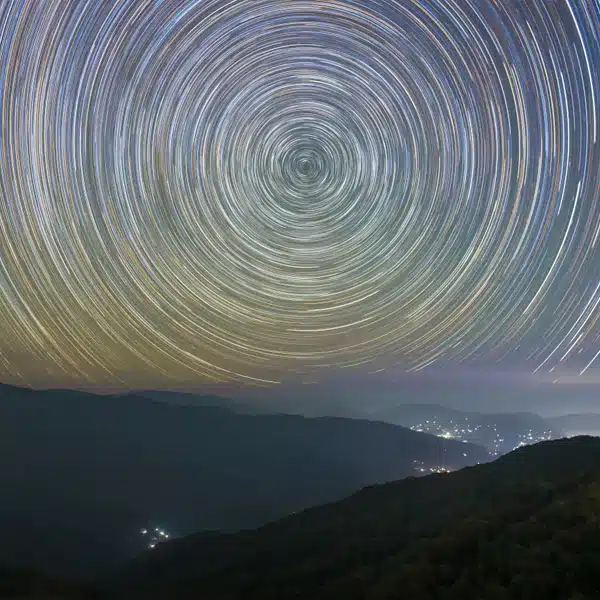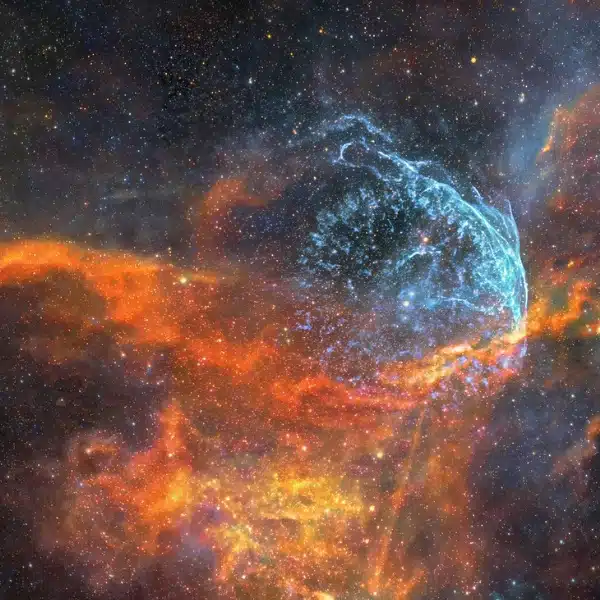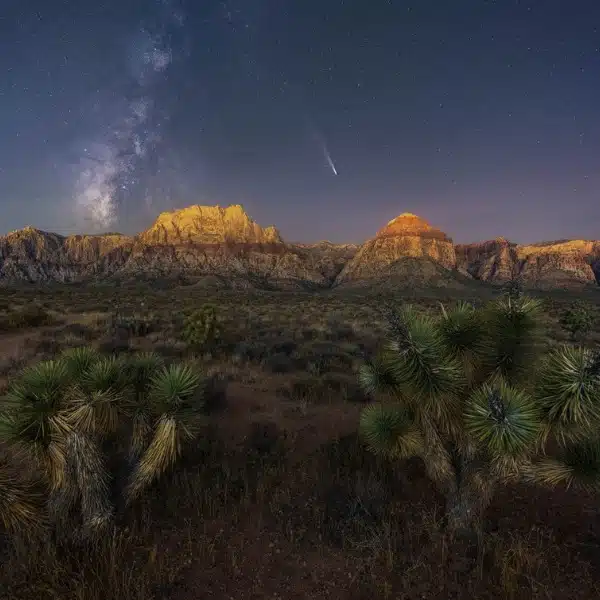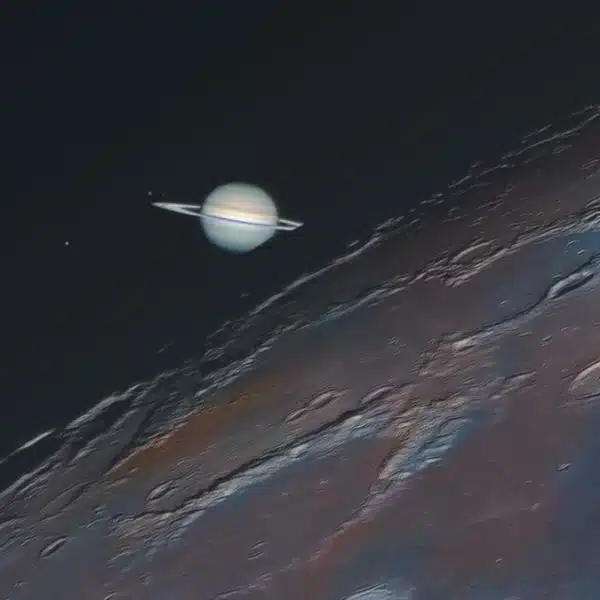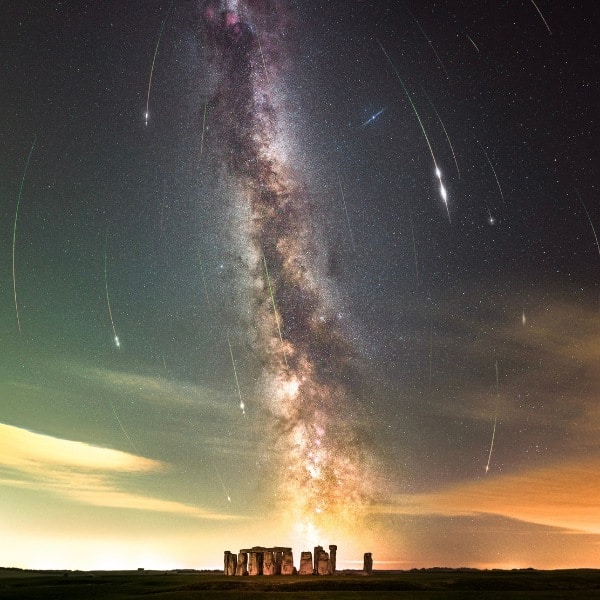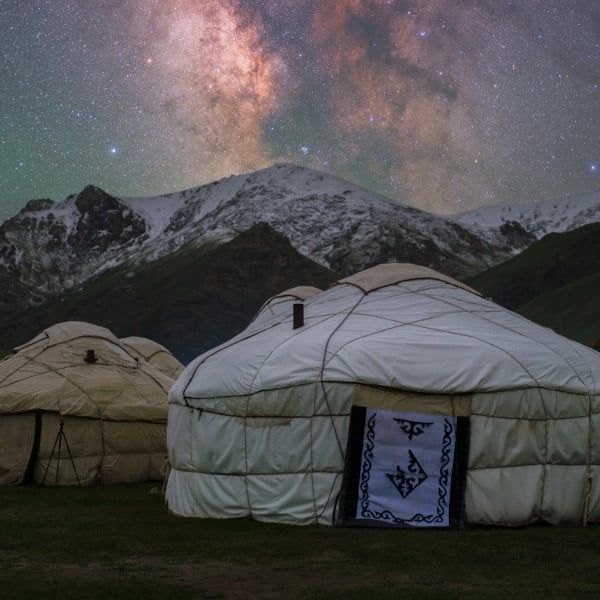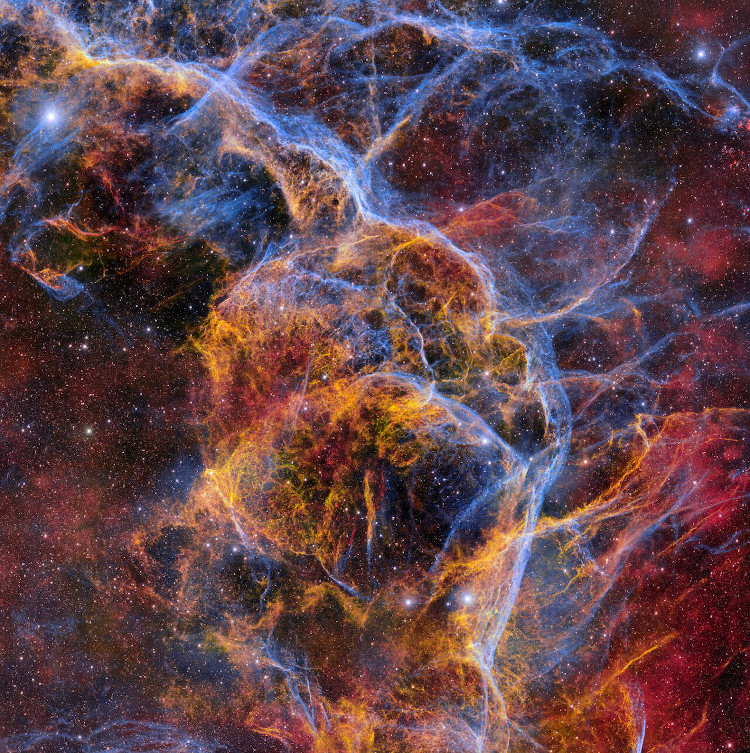
Photo: CTIO/NOIRLab/DOE/NSF/AURA
The Vela Supernova Remnant tells the story of what happens after a star dies. Described as the cosmic corpse of a gigantic star, it's an expanding nebula made of from the remains from a massive star that exploded about 11,000 years ago. Now, this stellar structure is the subject of a record-breaking photo. The Dark Energy Camera (DECam), which is mounted on the Victor M. Blanco 4-Meter Telescope at the Cerro Tololo Inter-American Observatory in Chile, has captured a 1.3-gigapixel image of the Vela Supernova Remnant—the largest ever captured by this camera.
Located about 800 light-years away from Earth, the Vela Supernova Remnant is about 100 light-years across. This means that the remnant spans an area on the celestial sphere 20 times larger than the angular diameter of the full moon, or about half a degree across in the sky. To capture this colorful and detailed image, the astronomers combined multiple exposures, resulting in an image that is 35,786 by 35,881 pixels.
“The Vela Supernova Remnant is merely the ghost of a massive star that once was,” writes the team behind the photograph. “When the star exploded 11,000 years ago, its outer layers were violently stripped away and flung into the surrounding region, driving the shockwave that is still visible today. As the shockwave expands into the surrounding region, the hot, energized gas flies away from the point of detonation, compressing and interacting with the interstellar medium to produce the stringy blue and yellow filaments seen in the image.”
To achieve the bright reds, yellows, and blues in this photo, the scientists used three DECam filters that each collect a specific color of light. “Separate images were taken in each filter and then stacked on top of each other to produce this high-resolution color image that showcases the intricate web-like filaments snaking throughout the expanding cloud of gas,” explains the team.
On top of getting one of the most striking astrophotographs of the year, this image will allow astronomers to better understand a key part of the late stages of a star. At the same time, some of the gas and dust may help form a new star someday. For now, scientists are also excited about the level of detail the Dark Energy Camera allows them in their never-ending quest to learn more about the universe. They conclude, “Owing to DECam’s large mosaic of CCDs, astronomers are able to create mesmerizing images of faint astronomical objects, such as the Vela Supernova Remnant, that offer a limitless starscape to explore.”
The Dark Energy Camera (DECam) has captured 1.3-gigapixel image of the Vela Supernova Remnant—the largest ever captured by this camera.
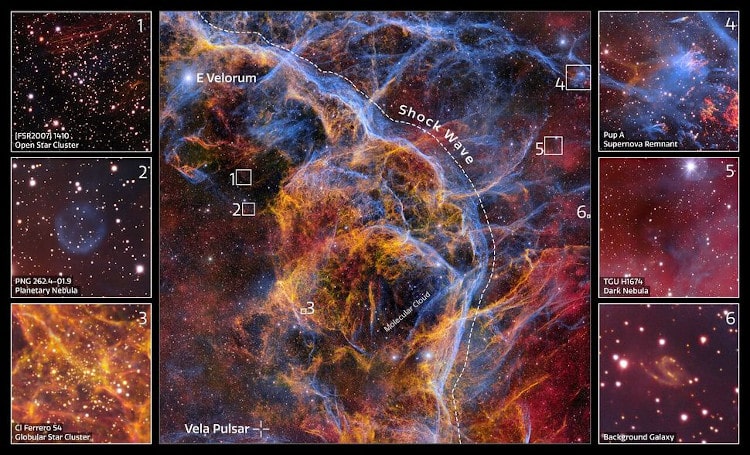
Some of the most interesting objects found within the new 1.3-gigapixel Vela Supernova Remnant image. (Photo: CTIO/NOIRLab/DOE/NSF/AURA)
NOIRlab: Website | Facebook
h/t: [Space]
All images via NOIRlab.
Related Articles:
Incredible Sky Map Details Over 900,000 Stars, Galaxies, and Black Holes
NASA Shares Photo of Distant Galaxies That Look Like a Penguin and an Egg
Green Bolt of Lightning Captured on Jupiter by NASA’s JunoCam
NASA Discovers New “Scorching” Seven-Planet System Orbiting Distant Star












































































